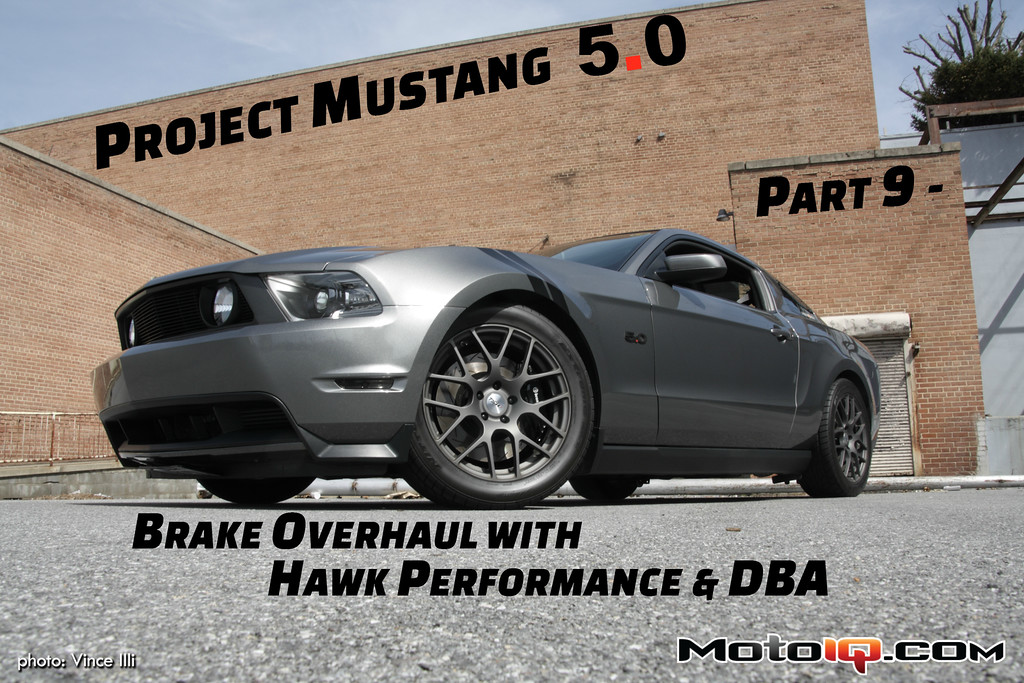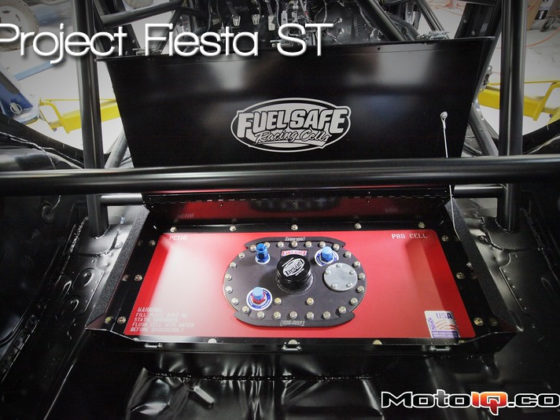
Project Mustang 5.0: Part 9 – Brake Overhaul with Hawk Performance and Disc Brakes Australia
The right pedal. It’s so much fun. When you push it to the floor, you’re rewarded with loud noises and acceleration. But unless you’re only living your life a quarter mile at a time, the pedal next to it is just as important, and maybe even more so. When you’re hot lapping Road Atlanta or dodging cones in a parking lot, you rely on your brakes to bleed speed and set you up for the perfect apex. (Or if you’re lapping Summit Point, you rely on those brakes to avoid hitting a deer that’s wandered onto the main straight.) But how do brakes actually work?
The Basics
When you press the brake pedal, you’re really pressing a lever that presses against a piston in the brake master cylinder. That piston presses against the brake fluid (which is really just a type of hydraulic fluid), which pressurizes the brake lines and, in turn, exerts a force on pistons in the brake calipers. Those pistons press the brake pads against the brake rotor (or disc). This clamping force slows the rotor down, which stops the car. I am of course talking about disc brakes here, because Project Mustang is not equipped with drum brakes, and I’m convinced that no one actually understands how drum brakes work anyway.
Read more about Project Mustang 5.0 Here!
 These are the “Stock GT” 2-piston sliding caliper brakes that we replaced back in Part 4.
These are the “Stock GT” 2-piston sliding caliper brakes that we replaced back in Part 4.Project Grey Mustang: Part 4 – Improving Drivability and Reliability
Now, let’s talk a bit about energy. Thermodynamics tells us that energy can neither be created or destroyed, merely transformed from one form to another. When your car is moving, it possesses kinetic energy, which is measured in Joules. In order to stop the car, we need to safely transform that kinetic energy into another form of energy so that the car can slow down and stop. The formula for kinetic energy is straightforward:
k = 1/2 m v2
That formula simply states that the kinetic energy that something possesses is one half of the mass multiplied by the square of the velocity. As an example, let’s consider Project Mustang traveling at 55 mph. With your author in it, Project Mustang weighs about 3,800 pounds. Converting that into mass and the metric system (the language of SCIENCE!) gives us roughly 1,700 kilograms. 55 mph is roughly 25 meters per second. So, plugging those two values into the formula gives us:
k = (1/2)(1 700)(25)2 = 531,250 J
530 kilojoules is a lot of energy. That energy has to be turned into a different form in order to stop the car. Brakes use friction between the pads and rotors to turn the vast majority of a car’s speed into heat.
The Problem with Heat
 These are the brakes off of a BMW M3 ALMS race car that I took back at the Baltimore Grand Prix in 2011. See how big the rotors are? Also note the thickness of the brake pad (the blue thing between the caliper and rotor).
These are the brakes off of a BMW M3 ALMS race car that I took back at the Baltimore Grand Prix in 2011. See how big the rotors are? Also note the thickness of the brake pad (the blue thing between the caliper and rotor).So we’ve got a ton of heat that needs to be dissipated from converting half a megajoule of kinetic energy into heat when we stopped Project Mustang. We don’t want that heat to go into the brake fluid. If the brake fluid gets too hot, it will boil. Boiled brake fluid is now a gas instead of a liquid. Since gasses are compressible whereas liquids aren’t, boiled brake fluid will cause a “spongy”-feeling brake pedal at best and transfer zero of the force of the brake pedal to the calipers at worst.
The brake pads act as an insulator to the brake fluid. This is why race cars have such thick brake pads, and why they are swapped out when it looks like half of their usable thickness still remains. Race car engineers know that a thinner pad means less insulating material between the hot brake components and the fragile brake fluid.
So we need something to remove the heat from the system. The brake disc does exactly that: it acts as a heat sink. Brake discs are usually made of iron, which is a good conductor of heat. (Some race cars today have brake discs made of a special carbon material, but the principle is still the same.) Contrary to popular belief, the advantage of a “big brake kit” is not increased stopping power, though the added distance between the center of the brake pad and wheel hub does provide some increase in applied brake torque. The true advantage of larger brake discs is increased thermal mass (for conducting the heat) and increased surface area (for dissipating the heat).



